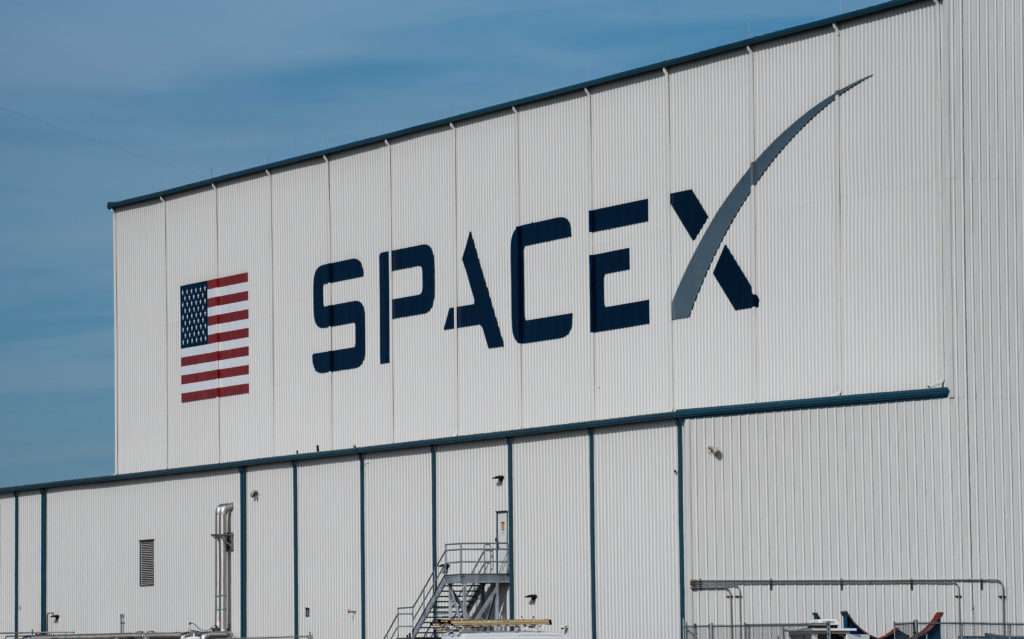2024 was a year in which AI continued to dominate the tech world, building on its momentum from previous years. Over the past 12 months, advanced AI technologies have been integrated across various industries and applications, with trends such as generative AI (genAI), AI personalisation, AI automation and AI in cybersecurity further shaping the economy.
AI regulation also became a point of focus during the year, with the EU’s AI Act and other frameworks focused on developing guidelines for transparency, accountability and privacy.
As we head into the New Year, the editorial team at National Technology News spoke with a range of experts to find out their predictions on the technology developments we can expect to see in 2025.
AI-driven robotics will blur the lines between humans and machines
AI-driven robotics is expected to be a major trend in 2025.
With continuous advancements in AI technology in 2024, including deep learning and reinforcement learning, improvements in next-generation robots are accelerating, building upon innovations in mechatronics and expanding beyond traditional industrial uses.
While robotics used to be dominated by hard-coded, task-specific machines, the development of genAI is spurring the development of new products – including humanoid robots and collaborative robots, or cobots – that can adapt to diverse scenarios and learn continuously from their environment.
Pascal Brier, chief innovation officer at technology consulting firm Capgemini and member of the group executive committee says: "In 2025, we will see AI and genAI having a major impact on companies’ priorities and also on many adjacent technology domains, such as robotics.”
According to Capgemini, 24 per cent of top executives and 43 per cent of venture capitalists see AI-driven automation and robotics as one of the top three tech trends in data and AI in 2025.
AI-powered robots will drive efficiency, flexibility, and innovation, becoming key components of intelligent, connected systems that redefine industrial processes, spanning a range of fields including healthcare and transportation, manufacturing and logistics.
With robots becoming more autonomous and AI taking on complex decision-making roles, the future of work may see a shift in the traditional structure of authority.
“The rise of AI-powered machines that mimic human behaviours challenges our understanding of leadership, responsibility, and collaboration, ultimately pushing us to reconsider the role of humans,” says Capgemini.
Liz Centoni, chief customer experience officer at tech firm Cisco, says that the future of work won’t be a binary choice between humans or machines, it will be an “and.”"AI-powered humanoids will form a part of the future workforce, and we will likely see the first instance happen next year,” she explains. “This will force companies to completely reimagine their workplace dynamics – and the technology that powers them.”
Agentic AI will take the spotlight for improved collaboration
2025 will likely see the further development of agentic AI, systems that are designed to act autonomously and make decisions without constant human intervention.
They will become a prominent trend as they advance in autonomy and automation and get integrated into IoT devices, robotics, and edge computing to perform tasks in real-world scenarios.
Agentic AI can continuously learn from user inputs and integrate contextual information and make decisions with little to no human oversight. Unlike today’s approaches that require user prompts or predefined rules, agentic AI will operate proactively.
“Imagine a customer service AI that predicts user needs before a query is made, or a network management AI that identifies potential issues and resolves them autonomously, ensuring uninterrupted service,” says Cisco’s Liz Centoni.
As an example, she says multiple AI agents could automate supply chain management by coordinating with each other to forecast demand, optimise inventories, coordinate deliveries, and even negotiate with suppliers.
“For businesses, this shift means a leap in efficiency and personalisation,” she adds. “It also underscores the importance of governance and guardrails.
"In response to the rise of agentic AI, we will see organisations implementing mandatory ethical guidelines to ensure fairness and transparency in algorithmic decisions and protecting intellectual property.”
Cybersecurity and AISMP integration
As organisations increasingly adopt AI- driven solutions and integrate them into their core operations, securing these systems is set to become a critical point. With new laws and regulations set to shape the AI landscape, businesses will have to boost their cybersecurity defence against possible threats.
Jaimen Hoopes, vice president of product management at software company Forcepoint, agrees that organisations will increasingly focus on adopting new approaches for AI specific threat detection, such as AI security posture management (AISMP) becoming one of the primary solutions.
AISMP’s approach aims to manage and improve the security of AI systems and applications, focusing on ensuring that AI models, their underlining infrastructure and the data they interact with are secure and compliant with relevant regulations.
While businesses employ cloud posture management system (CSPM) capabilities to focus on cloud infrastructure and data security posture management (DSPM) to prioritisze data in all stages of its lifecycle, AISMP focuses on the security of AI and ML systems, Hoopes explains.
“This means that it is better tailored to addressing the vulnerabilities associated with AI systems and how they interact with data and infrastructure, aiding in discovery, misuse detection, compliance enforcement and much more,” he says.
Merchants will expand pay-by-bank
The expansion of pay-by-bank systems is likely to become a significant trend in 2025. Pay-by-bank, which involves direct transfers from customer bank accounts to merchants without relying on card networks, has been pushed by The Consumer Financial Protection Bureau (CFPB), which has recently introduced new Open Banking rules for the US market, enabling customers to authorise third-parties to access their account information and initiate secure payments through the payment option.
“Pay-by-bank offers advantages such as lower transaction costs, since these payments bypass card networks, and historically lower instances of fraud,” says Jeff Hallenbeck, head of payments at software company Forter. “However, consumer adoption varies by region.“However, pay-by-bank systems can be challenging to implement, lack a credit option, and may experience settlement delays in some cases.”
Multimodal AI for a more intuitive customer service will continue to grow – particularly in banking
In the world of customer service, AI has been a driver of innovation over the past 12 months, and this is likely to continue into 2025 with multimodal AI.
The technology uses a range of inputs and modalities, such as voice, text, images and videos, to create more dynamic, intuitive and effective interactions between businesses and their customers.
According to Zac Maufe, global head of regulated industries at Google Cloud, the trend will particularly emerge in the banking industry. He says it will aim to simplify the banking experience for customers thanks to its ability to connect information from different sources.
“This means your banking app can access your transaction history, recognise images of your receipts, and even understand your voice commands to provide you with complete and accurate answers to your financial questions,” he continues.
Expansion of broadband connectivity in the UK
In the UK, as the economy becomes increasingly digital, TalkTalk Business says that high-speed internet access will continue to be a prominent trend into 2025.
The UK government private sector has been actively working during 2024 to boost digital infrastructure, focusing on expanding nationwide gigabit-capable broadband and expanding coverage to rural areas.
Ruth Kennedy, chief executive of TalkTalk Business, said expansion in 2025 will continue, with a focus on extending broadband connectivity in the North, which has significantly lagged the South in terms of digital infrastructure.
“By addressing these disparities, the government will aim to stimulate regional economies and create a more balanced economic landscape,” she says.
Upskilling the workforce for new AI skills
As the rollout of advanced AI continues to spread across different industries, a collateral trend will be companies upskilling their workforce to remain competitive.
One example of where training could be necessary is for teams implementing a DevOps strategy.
Steve Barrett, vice president of EMEA, at software company Datadog says: “In 2025 we’ll see DevOps teams develop new sets of skills that will help them debug AI products and services. They can obtain these skills using existing methods like clustering, which allows you to cluster - or group - events to spot trends,” he says.
“The ability to fix AI bugs in the lab or in the wild will become a critical skill, helping to improve the performance of gen AI agents and Copilots.”
Balancing sustainability and growth in an AI-powered area
With the advancement of AI, the environmental impact of the technology is now an elephant in the room for most organisations and industries.
By 2025, the amount of energy used by data centres dedicated to AI is expected to match the amount consumed by a country the size of the Netherlands, says Cisco’s Liz Centoni. “Indeed, in many of my AI conversations with customers, sustainability emerges as a core concern,” says Centoni.
She adds that in 2025, customers will increasingly seek out partners who can deploy technology while helping them meet their net-zero commitments and sustainability goals.
“Businesses that win will be those who prioritise energy-efficient products and circularity in business models,” she explains.
AI-powered technology could also play a crucial role in unlocking energy efficiencies, she adds. Businesses will see AI unlock a new era of “energy networking” that combines software-defined networking capabilities with an electric power system made up of direct current (DC) micro grids to deliver more visibility into emissions, and a platform for optimising power usage, distribution, and storage.
More electrification and battery powered fleets will be a priority and a challenge
In the logistics industry, sustainability will be a key focus in 2025, with a goal to transition to fully electrified, battery powered fleets.
“Alternative fuels such as Liquified Natural Gas (LNG), Hydrotreated Vegetable Oil (HVO), and Compressed Natural Gas (CNG) are already playing a vital role in reducing greenhouse gas emissions, improving air quality, alleviating congestion, and reducing strain on existing infrastructure,” Chris Hyde, managing director at transportation specialist GXO Logistics, explains.
However, achieving this goal remains a challenge for the industry due to current technological and infrastructure limitations according to Hyde.
“Key hurdles include limited range capabilities, vehicle charging times, charging infrastructure, energy security, and the high upfront costs associated with acquiring electric vehicles (EVs),” he explains.
Latest News
-
US pauses UK tech prosperity deal over wider trade disputes
-
Ofcom investigates BT and Three after summer outages disrupted 999 calls
-
Monzo announces plans to buy digital mortgage broker Habito
-
Technology secretary launches Women in Tech Taskforce
-
Asahi weighs dedicated cybersecurity unit after ransomware disruption
-
Crypto exchange HashKey ‘raises $206m’ in Hong Kong IPO
The future-ready CFO: Driving strategic growth and innovation
This National Technology News webinar sponsored by Sage will explore how CFOs can leverage their unique blend of financial acumen, technological savvy, and strategic mindset to foster cross-functional collaboration and shape overall company direction. Attendees will gain insights into breaking down operational silos, aligning goals across departments like IT, operations, HR, and marketing, and utilising technology to enable real-time data sharing and visibility.
The corporate roadmap to payment excellence: Keeping pace with emerging trends to maximise growth opportunities
In today's rapidly evolving finance and accounting landscape, one of the biggest challenges organisations face is attracting and retaining top talent. As automation and AI revolutionise the profession, finance teams require new skillsets centred on analysis, collaboration, and strategic thinking to drive sustainable competitive advantage.
© 2019 Perspective Publishing Privacy & Cookies




 (1).jpg)







Recent Stories